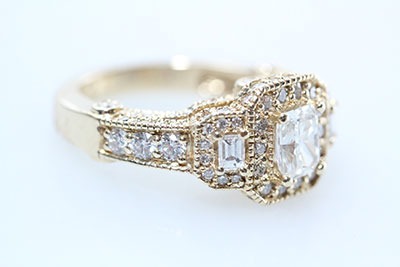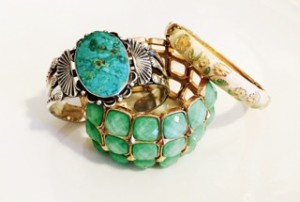Bellevue 425-454-1283 · Lynnwood 425-672-2646 · Issaquah 425-392-0450 · Tacoma 253-328-4014

Countless are the times that we go out seeking a new piece to add to our collection of jewelry. While some may be more than comfortable navigating their way through the process of searching for and purchasing that fabulous new item, others would say that “intimidating” is an understatement. In an effort to help ease the pain of walking through the door and to boost confidence in your next purchase, here is a brief overview of Art Nouveau and Art Deco…
Art nouveau emerged in Paris at the time of the Industrial Revolution and was boosted into global popularity, which lasted until the end of World War I in 1915. This new art form was highly innovative for its time and attributed to redefining the jeweler as an artist rather than a craftsman.
The brilliance of the artist exuding from each piece from this era perfectly encompasses the inspiration they gained from nature. Like sculptures and glass art from this period, brooches, pendants, earrings, and rings transitioned from the everyday single stone setting into elaborately adorned dragonflies, butterflies, birds, women and flowers, holding no true symmetry. Only the flow and  curvature of the aforementioned were what drove the artist to create the powerful designs that we are once again holding in high regard.
curvature of the aforementioned were what drove the artist to create the powerful designs that we are once again holding in high regard.
Many of the artists during this time were also inspired by Japanese artwork, allowing for a great display of traditional fans to transpire into bold brooches as well. Additionally, artists began working with different natural materials such as horns and glass in lieu of the traditional metal and stone/gem jewelry.
Art deco emerged around the end of World War I, which was also the tail end of art nouveau and the Edwardian period, giving jewelry a more modernist approach. Art deco would hold its popularity in all aspects of art and architecture until around 1935, when many of the on-setting conflicts of World War II began.
During this 20-year span, buildings, artwork and jewelry were being produced with concise symmetry, which also entailed detailed or simple geometric designs. More often than not the pieces included bold, diverse color with intricate abstract designs, which is attributed to the artwork and jewelry of indigenous peoples. The opening of King Tutankhamen’s tomb in 1922, for example, prompted Egyptian inspired art deco items such as scarab and miniature sarcophagus. In addition to ancient Egyptians, Native American, Aztec, ancient Greeks and Romans also inspired artists during the art deco period. Drawing from these different cultures and eras helped make art deco incredibly diverse in designs and colors.
Many of the materials being used were once again metals and vibrant stones such as stainless steel and chrome that were then molded into clean lined shapes, abandoning the flowy, billowing curves that is art nouveau.
To get a better grasp and view the equally differing yet beautifully mastered styles, stop by any of the four Bellevue Rare Coins locations during operating hours. We have staff that is passionate and knowledgeable on pieces from these times.